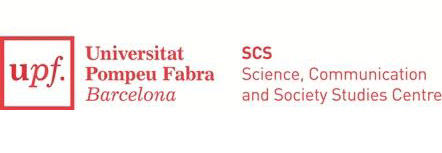MODULE C3
Focus group with relevant actors (case studies “science cities”)
Here is the specific guideline to conduct the focus group corresponding to Module C3. For further technical details about this technique in the framework of PLACES project please refer to Methodological Considerations Chapter (p.25).
In this module, it would be ideal to conduct at least two focus groups of 4-8 participants each with the most important actors (or representatives in the case of institutional actors). If several actors of the same type were involved in the case (e.g. a group of scientists) one or two representative members of that actor type should be invited to the focus groups (preferable in different focus groups). The main goal of these groups is to measure the impact that participating in the event has caused on the actors represented in the focus groups.
Selection of participants
Based on general knowledge of the case gathered in the preparation of the case study, the most important actors from the list of actors (see Table 2, p.19) should be selected. Prospective participants have to be contacted and asked to agree to participate in the groups. Since there are at least two focus groups in this module, the distribution of participants in the groups should be considered carefully.
Conducting the focus group
For the current case it seems useful to begin – after an introduction by the moderator – with a round of statements, giving each participant about 5 minutes to talk about his/her response and the respective institution’s response about participating in the city of science initiative.
After these statements, the moderator should introduce the rather general question to stimulate the discussion: “What has changed for you from your involvement in the city of science initiative?” The moderator’s task is then to structure the debate, and – if necessary – to introduce key words from the list of potential areas of impact or effects on actors (see p.75 or p.22). in order to make the group think about a broad spectrum of possible effects.
Analysis
Ideally, the analysis of the focus groups should be based on transcripts of the audio recording.
It is less likely than in the case of individual interviews to do listening and summarizing in one step thus saving the need for transcription. As described in module C1 and C2, the analysis should focus on the explicit and implicit comments of the interviewee of how he/she or their institution were affected (e.g. acquired skills and new insights, had benefits for their work, made useful contacts etc., see p. 75 or p. 22 for a list of potential areas of impact or effects on actors). Indicators for such effects could be the self-reporting of participants, but also information about follow-up activities or consequences of the participants’ involvement in the case.
The analysis should thus result in a selective, structured summary of the focus groups. It should identify the impact dimensions mentioned by the participants and their description of the kind of impact and the size of it in the speakers’ own words. The analysis should also include the required context information (e.g. about the participants role in the case) necessary to understand why this impact has occurred and why is it important to the participant. If the participant mentions that a particular kind of impact has not occurred, this should also be taken into account for the analysis.
Reporting
The analysis of the focus group will be a section in the case study report. It should consist of a verbal description of the impacts on the relevant actors structured by actor and impact type.

